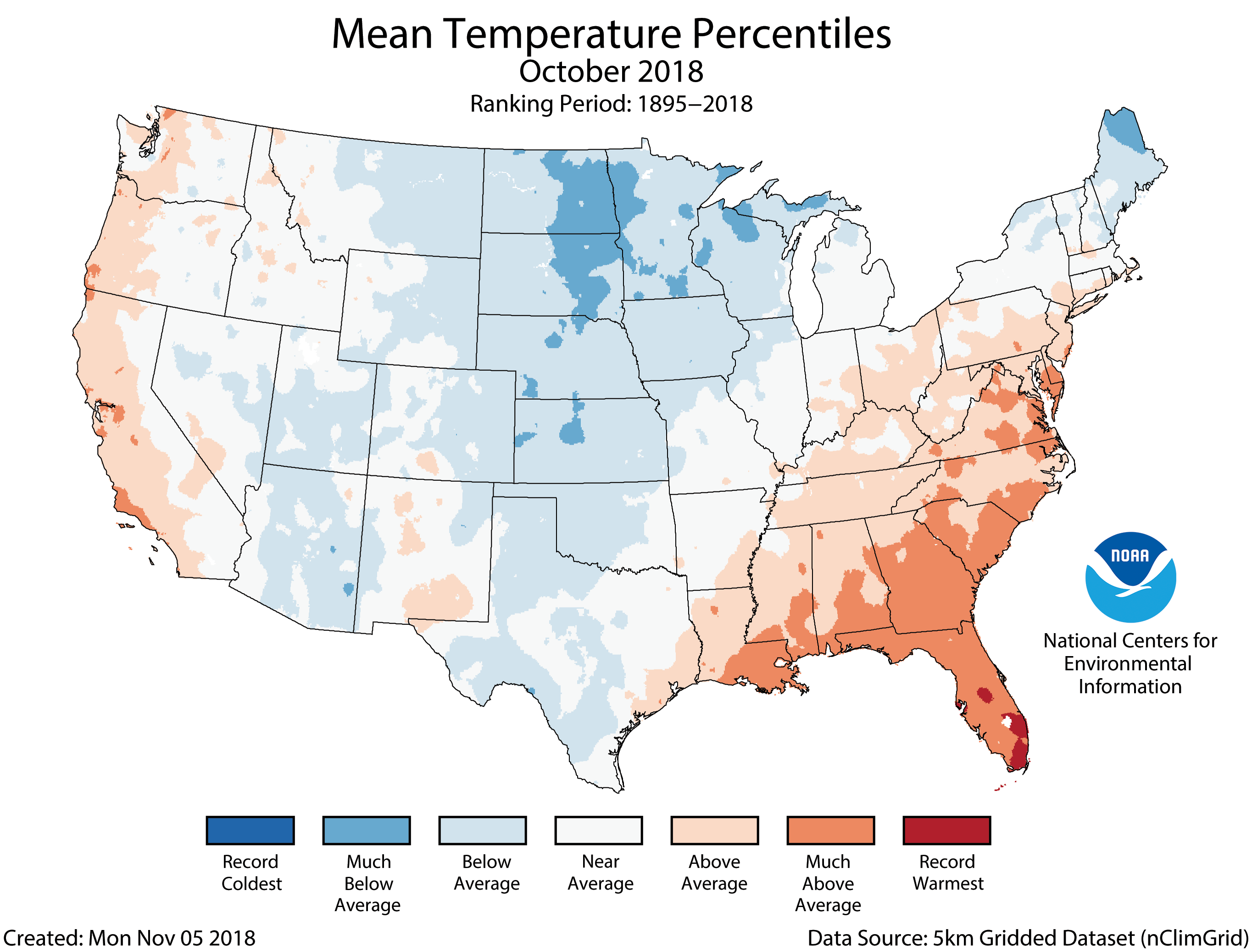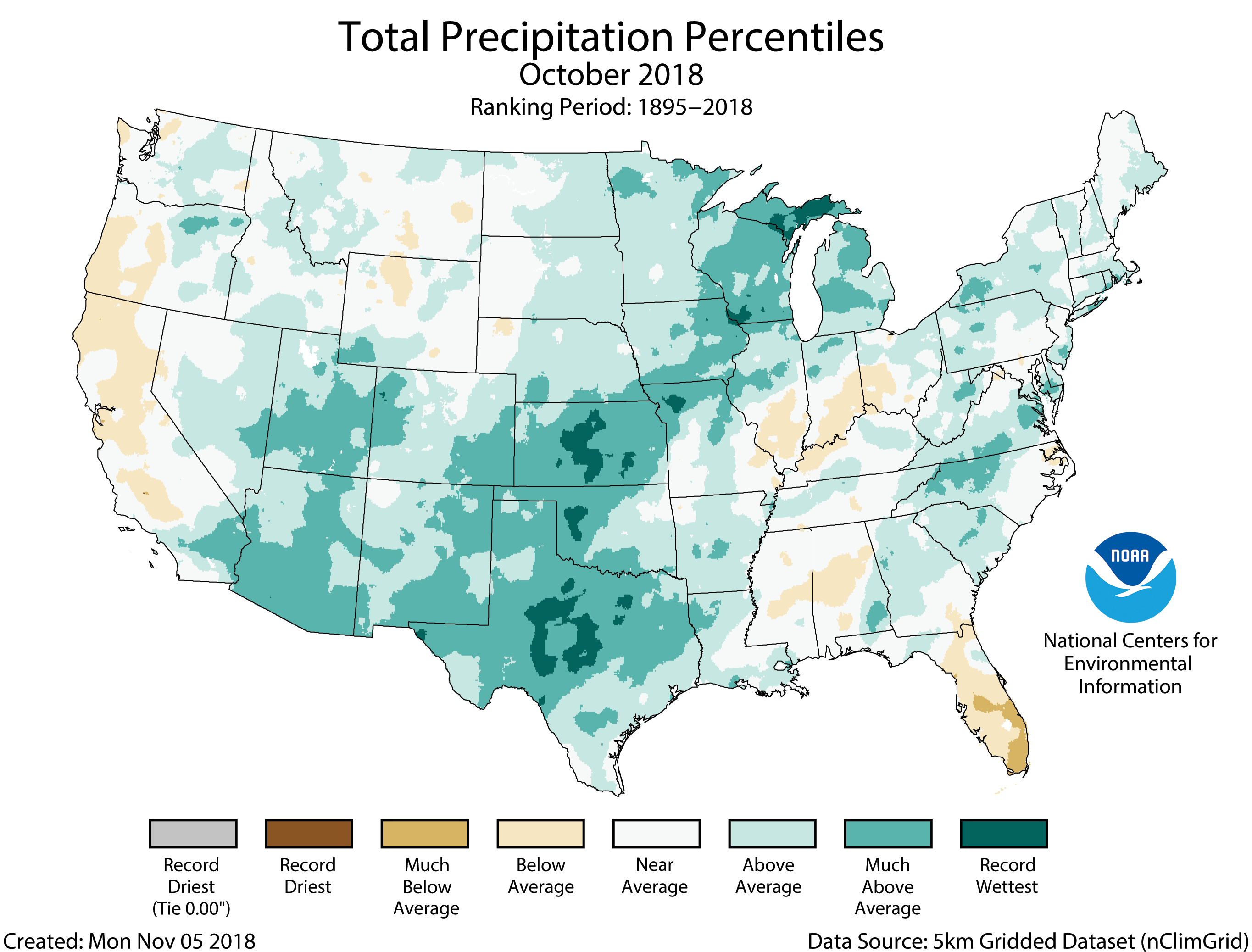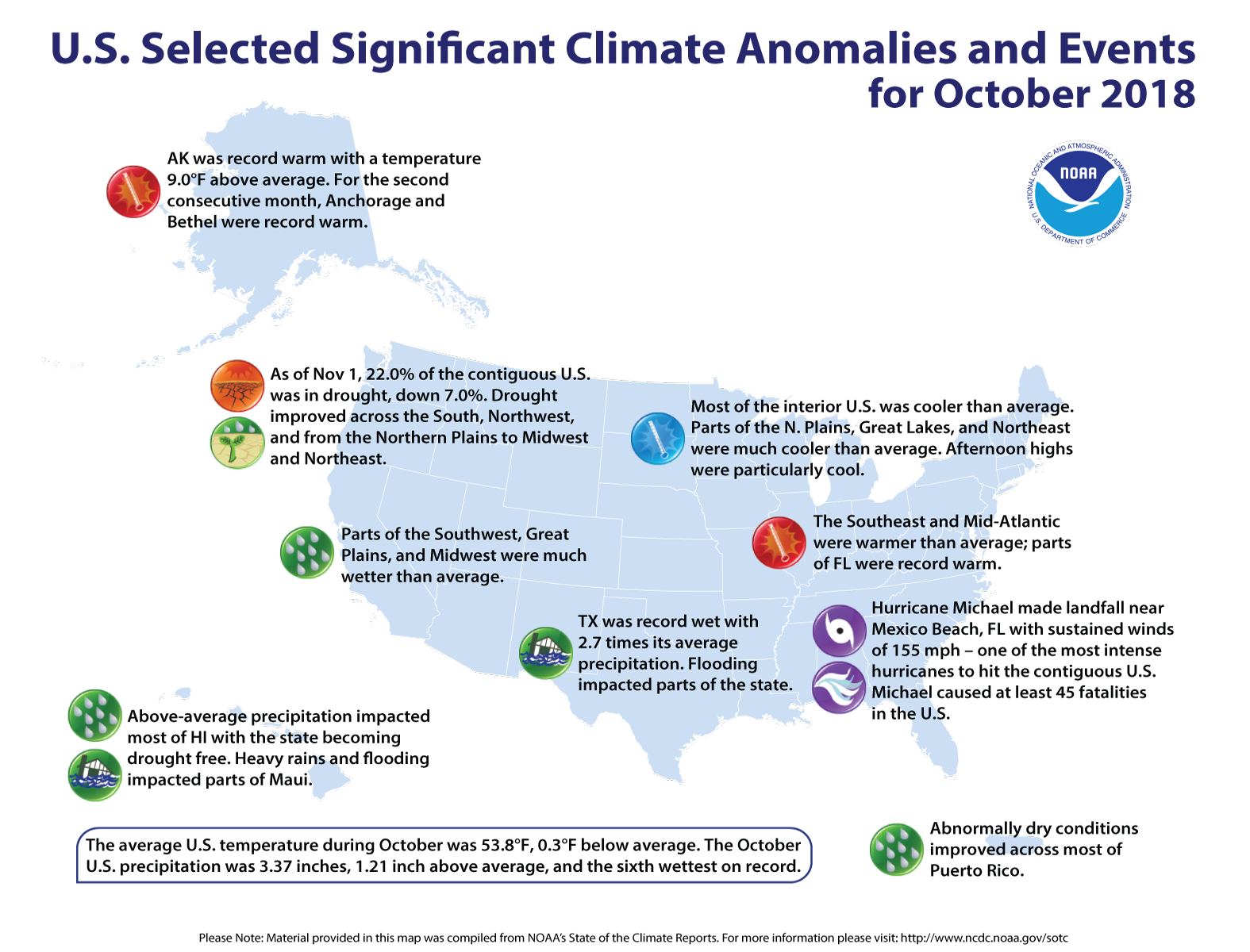October Stats - A Wet Month and the Coldest in Five Years
[Autumn leaves in a puddle. From iStock via NOAA]
The nation’s average temperature took a dip last month, making it the coolest October since 2013 for the contiguous United States. More rain than normal fell across large parts of the U.S., ending the month as the sixth-wettest October on record.
Here’s a closer look at the highlights from NOAA’s latest U.S. monthly climate report:

[Autumn landscape in Pennsylvania. From pixabay via NOAA]
Climate by the numbers
October 2018
The average October temperature across the contiguous U.S. was 53.8 degrees F (0.3 degree below average), or near the middle value in the 124-year record, according to NOAA’s National Centers for Environmental Information (NCEI). Most of the U.S. interior and areas of the Northeast had below-average temperatures, while locations on the West Coast and in the Southeast and Mid-Atlantic were above average.

- Below-average October temperatures were observed across the Intermountain West, Great Plains and northern New England, while above-average temperatures were confined to the West Coast and Southeast to Mid-Atlantic.
- During October, there was a stark contrast between daytime high temperatures, which were cooler than average, and nighttime low temperatures, which were warmer than average particularly across the central U.S. Much-below-average daytime temperatures stretched from the Southwest, through the Great Plains, and into the Upper Midwest and Northeast. Meanwhile, above-average nighttime temperatures were observed across the West, South and much of the East. However, the Central and Northern Plains observed below-average overnight temperatures.
- Alaska had its warmest October on record with a statewide average temperature of 34.5°F, 9.0°F above the long-term average. This surpassed the previous record of 34.0°F in 2013. Both Anchorage and Bethel experienced their warmest September followed by the warmest October on record. The warm temperatures also led to below-average snowfall for interior locations, with Fairbanks receiving only 0.7 inch of snow during the month. This tied with 2013 and was the second lowest October snowfall since 1926 for the city.
The average precipitation for October was 3.37 inches (1.21 inch above average), making it the sixth-wettest October on record. Many areas across the nation recorded above-average – and in some cases, record high – rainfall last month.

- Much-above-average precipitation was observed in the Southwest, Central and Southern Plains, Upper Midwest, and parts of the Southeast and Northeast. Texas had its wettest October on record with 6.86 inches of precipitation, 4.33 inches above average, surpassing the previous record of 6.17 inches in 2002. Several heavy rain events impacted the state during October, causing widespread flooding. Eight additional states had much-above-average October precipitation. Below-average precipitation fell across parts of the West, Ohio Valley and Southeast.
- Much of Hawaii was wetter than average during October with a mid-October rain event causing landslides and washing out roads. More than 6 inches of rain fell on parts of Maui in six hours. The heavy precipitation fell on already saturated ground, making flooding worse. Honolulu and Hilo each had a top 10 wet October.
- According to the October 30 U.S. Drought Monitor report, released on November 1, 22.0 percent of the contiguous U.S. was in drought, down from 29.0 percent at the beginning of October. Drought conditions improved dramatically across the Southern Plains and parts of the Central Plains, with more modest improvement across the Southwest, Northwest, Northern Plains, Midwest and Northeast. Drought also improved across Hawaii and Puerto Rico. Drought continued in southeastern Alaska, with persistent below-average precipitation impacting the region.
 More statistics of note
More statistics of note
-
Michael’s mark: Hurricane Michael, the strongest hurricane on record to hit the Florida panhandle, left a trail of destruction from Florida to Virginia and caused at least 45 deaths.
-
Improving drought: October ended with 22.0 percent of the contiguous U.S. in drought, down from 29.0 at the beginning of October.
-
“Baked Alaska”: The Last Frontier had its warmest October on record, with a statewide average of 34.5 degrees F (9.0 degrees above average).